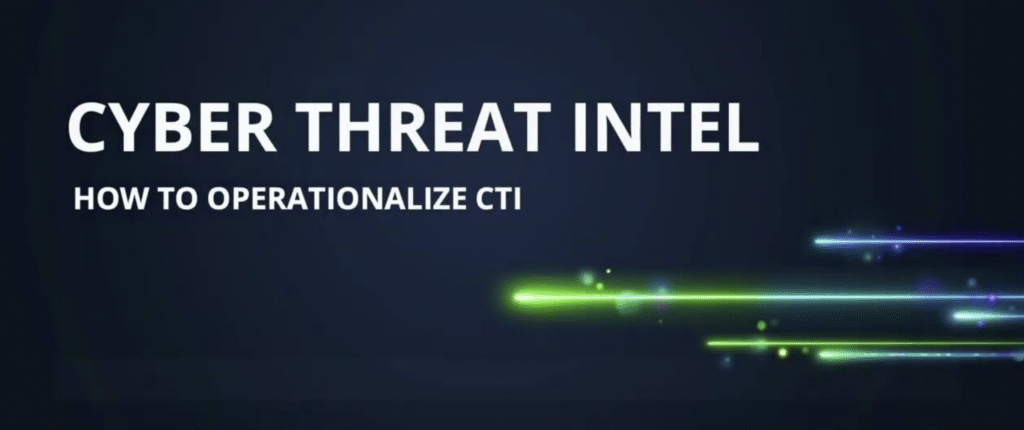
Status: Final Blueprint
Author: Shahab Al Yamin Chawdhury
Organization: Principal Architect & Consultant Group
Research Date: August 1, 2025
Location: Dhaka, Bangladesh
Version: 1.0
1. The Strategic Imperative
The operationalization of Cyber Threat Intelligence (CTI) is a strategic business necessity. The digital threat landscape is defined by increasing volatility and sophistication, making a reactive security posture untenable.
Key Threat Landscape Drivers:
- Rising Attack Volume & Cost: The global average cost of a data breach has reached a record $4.88 million, and weekly cyberattacks per organization continue to escalate.
- AI-Augmented Attacks: Adversaries use AI to craft sophisticated phishing campaigns and develop evasive malware.2 85% of workers believe AI has made cyberattacks more sophisticated.
- Multi-Extortion Ransomware: Ransomware attacks have evolved beyond encryption to include data theft, public shaming, and DDoS attacks to maximize pressure.
- Supply Chain as a Primary Vector: Compromises originating from third-party vendors are a leading attack vector, with the average enterprise relying on over 400 vendors.
A critical challenge is the “C-suite disconnect,” where senior leaders often underestimate the severity of cyber threats, a symptom of failing to translate technical risk into business impact. A mature CTI program bridges this gap, reframing cybersecurity from a cost center to a value creator that enables secure innovation and protects brand equity.
2. Foundational Frameworks
Structured models are essential for transforming raw data into actionable intelligence.
- The Intelligence Lifecycle: A five-phase, iterative process that provides the engine for all CTI activities:
- Planning & Direction: Defining goals and intelligence requirements (PIRs) based on stakeholder needs.
- Collection & Processing: Gathering raw data from internal, open-source, commercial, and community sources and preparing it for analysis.
- Analysis & Production: Applying analytical techniques and frameworks to contextualize data and create tailored intelligence products.
- Dissemination & Action: Delivering finished intelligence to the right stakeholders in the right format.
- Feedback: A continuous loop to refine and improve the process.
- Core Analytical Models:
- Cyber Kill Chain®: A high-level, 7-stage model that visualizes the linear progression of an external attack. It is excellent for strategic communication and identifying early disruption opportunities.
- MITRE ATT&CK®: A comprehensive knowledge base of adversary tactics, techniques, and procedures (TTPs). It provides the granular detail needed for threat hunting, detection engineering, and defensive gap analysis.
- Diamond Model of Intrusion Analysis: An analytical model that organizes an intrusion event around four vertices: Adversary, Infrastructure, Capability, and Victim. It is ideal for threat actor profiling and campaign tracking.
3. CTI Operationalization Engine
This is the practical workflow for turning intelligence into automated defensive action. The pinnacle of operationalization is the seamless integration of a Threat Intelligence Platform (TIP) with SIEM and SOAR platforms.
Automated Workflow Example:
- Enrichment: The TIP feeds high-confidence intelligence into the SIEM, automatically enriching raw event logs with context.
- Alerting: A low-level event is transformed into a high-fidelity alert (e.g., “Connection to a known C2 server for APT29”).
- Orchestration: The alert triggers a pre-defined playbook in the SOAR platform.
- Response: The SOAR playbook executes automated actions in seconds: isolating the host, blocking the malicious IP at the firewall, and creating a detailed incident ticket.
4. Building the CTI Capability
A successful program requires the right people, processes, and technology.
- Team Structure: A mature CTI team includes specialized roles such as a CTI Lead, Strategic Analyst, Tactical Analyst, Malware Analyst, and CTI Engineer.
- Required Skills: Analysts need a blend of hard skills (malware analysis, network analysis, OSINT) and soft skills (critical thinking, communication, adversarial mindset).
- Technology Stack: The Threat Intelligence Platform (TIP) is the central workbench. Key evaluation criteria for a TIP include intelligence quality, analytical capabilities, and, most importantly, robust API and integration support with existing security tools.
5. Measuring and Communicating Value
To justify investment, CTI value must be quantified for both technical and business audiences.
- Operational Metrics (For the SOC):
- Mean Time to Detect (MTTD): Measures how quickly a threat is identified.
- Mean Time to Respond (MTTR): Measures how quickly an incident is contained.
- True/False Positive Rate: Measures the accuracy of alerts generated from intelligence.
- A mature CTI program demonstrably improves all of these metrics.
- Financial Value (For the Boardroom):
- Return on Security Investment (ROSI): This model reframes CTI spending as an investment that generates a return in the form of avoided loss.
- Formula:
ROSI = (Avoided Loss - Cost of Solution) / Cost of Solution - Calculating ROSI requires quantifying the Annualized Loss Expectancy (ALE), which is a core deliverable of the strategic CTI function.
6. The Future of Threat Intelligence
The CTI field is rapidly evolving, driven by AI and a shift toward preemption.
- Predictive Analytics: The future lies in moving from reactive defense to predicting future attacks before they launch by using machine learning to identify attack precursors.29
- The Role of AI/ML: AI is a force multiplier, automating data processing and pattern detection at a scale impossible for humans. However, current Large Language Models (LLMs) have been shown to be unreliable for high-stakes CTI tasks, often expressing high confidence in incorrect answers. The optimal strategy is a “human-in-the-loop” model, where AI augments, but does not replace, human analysis.